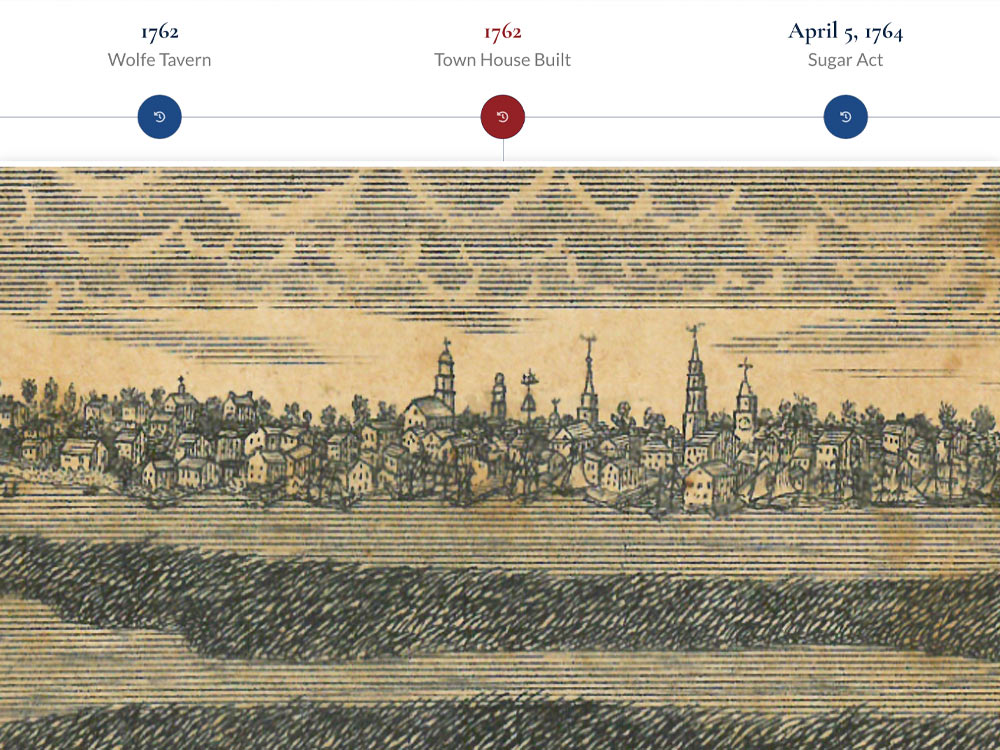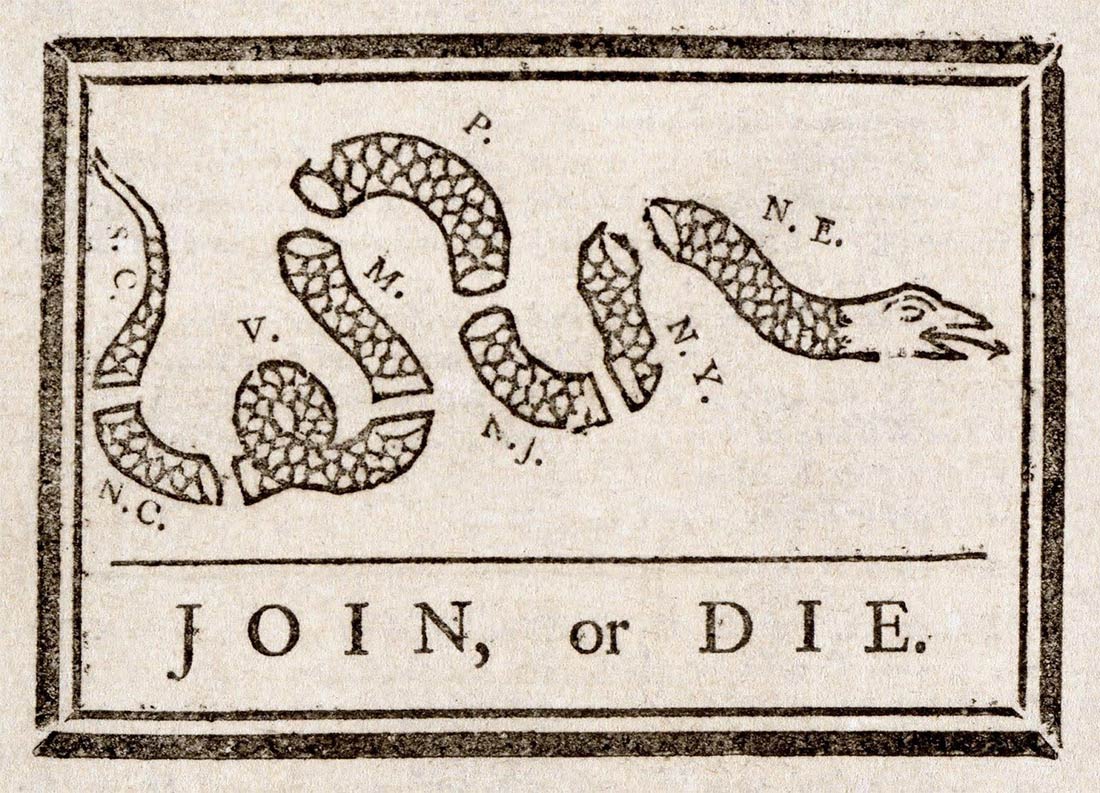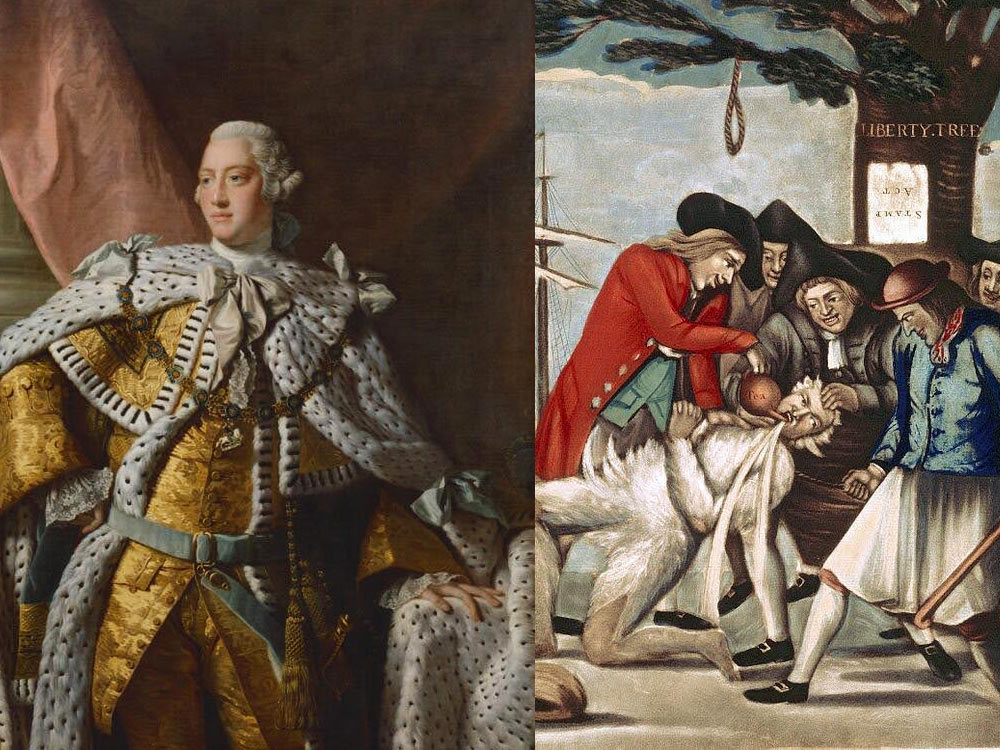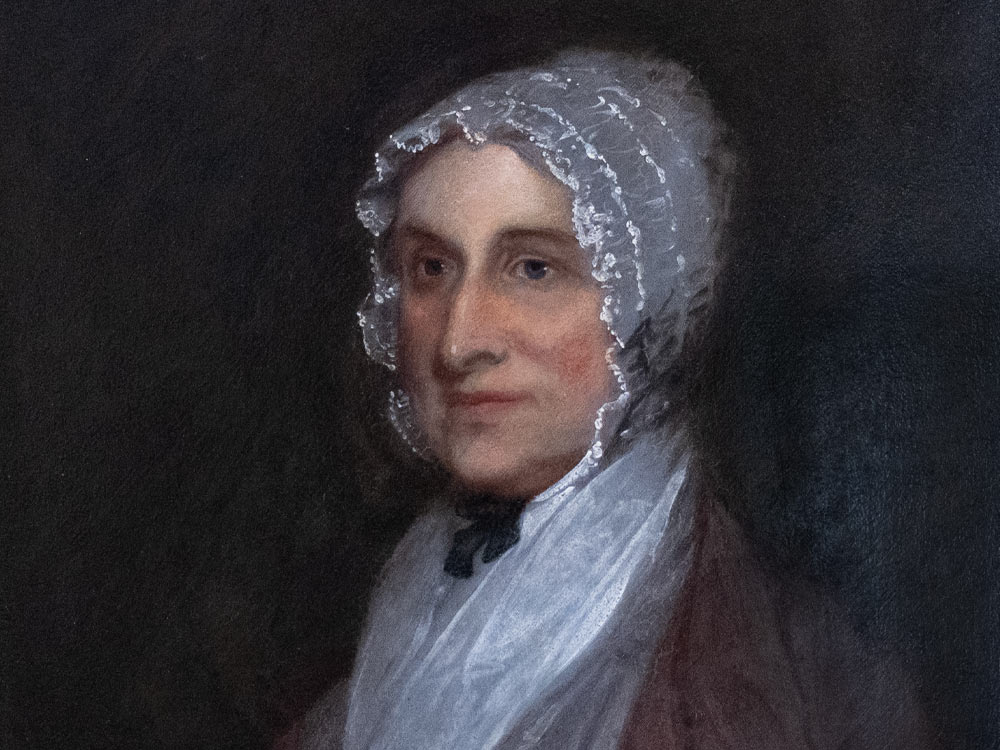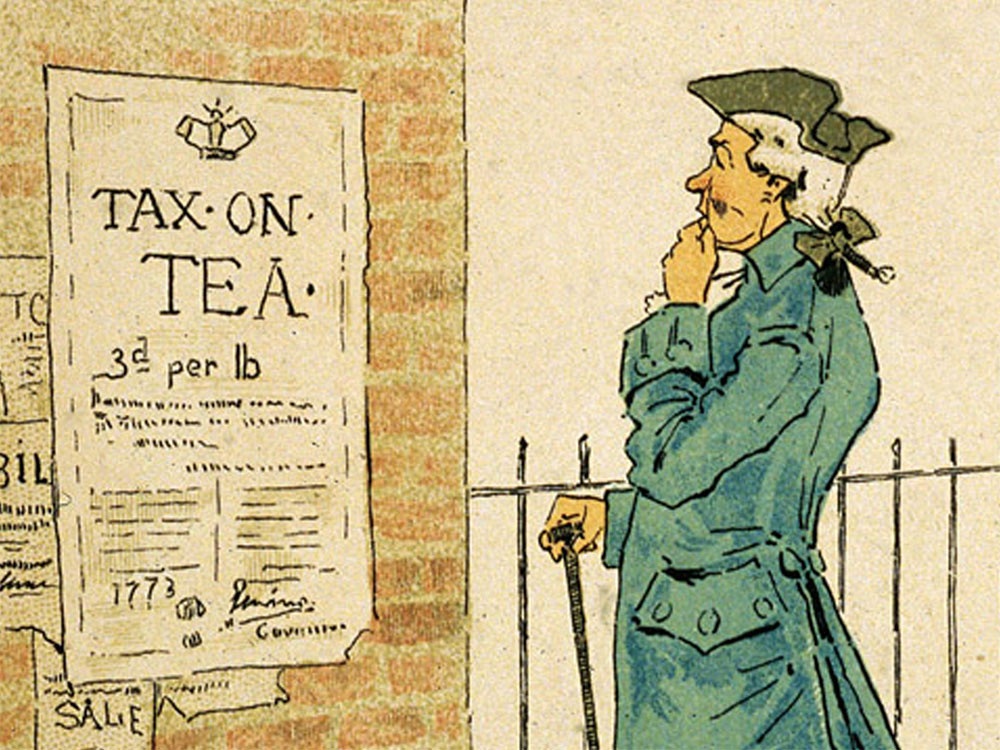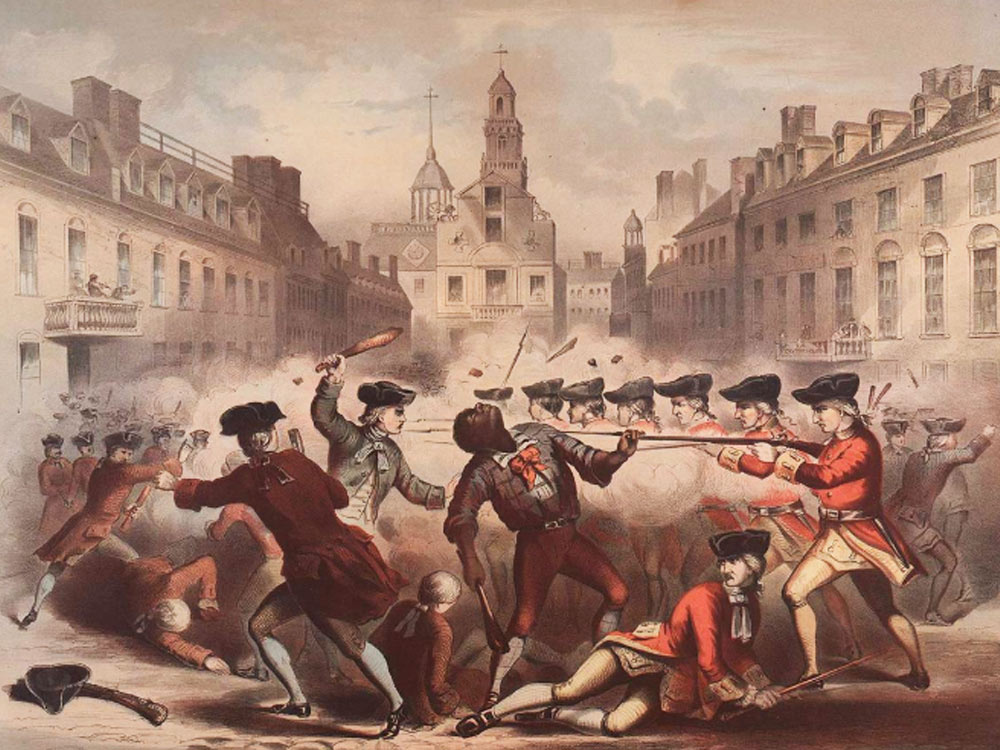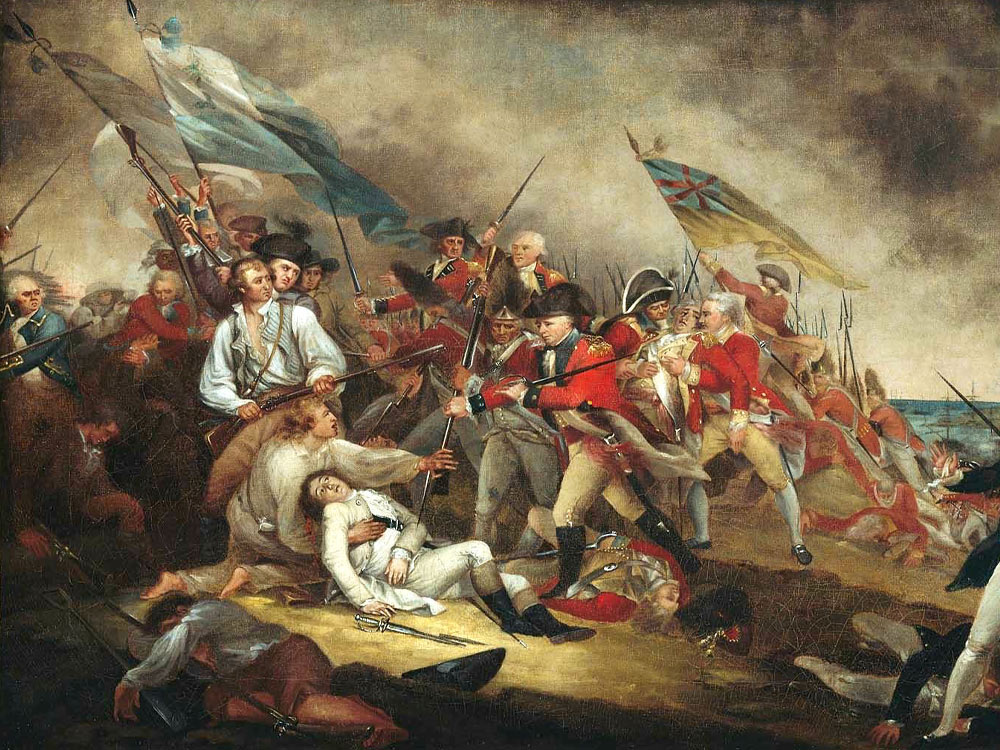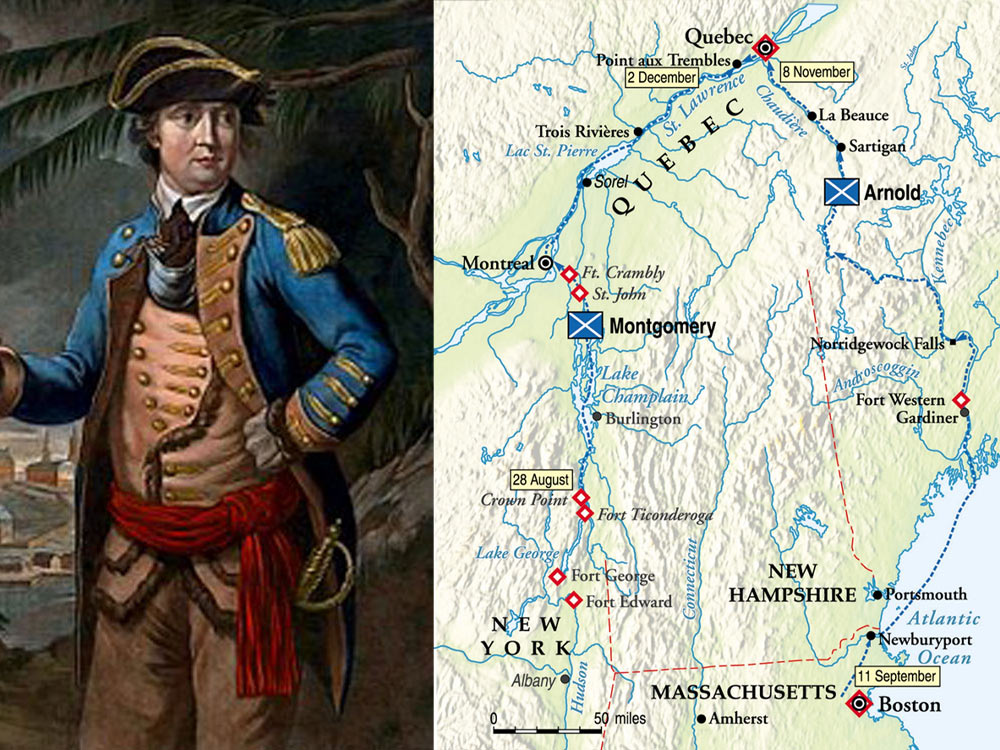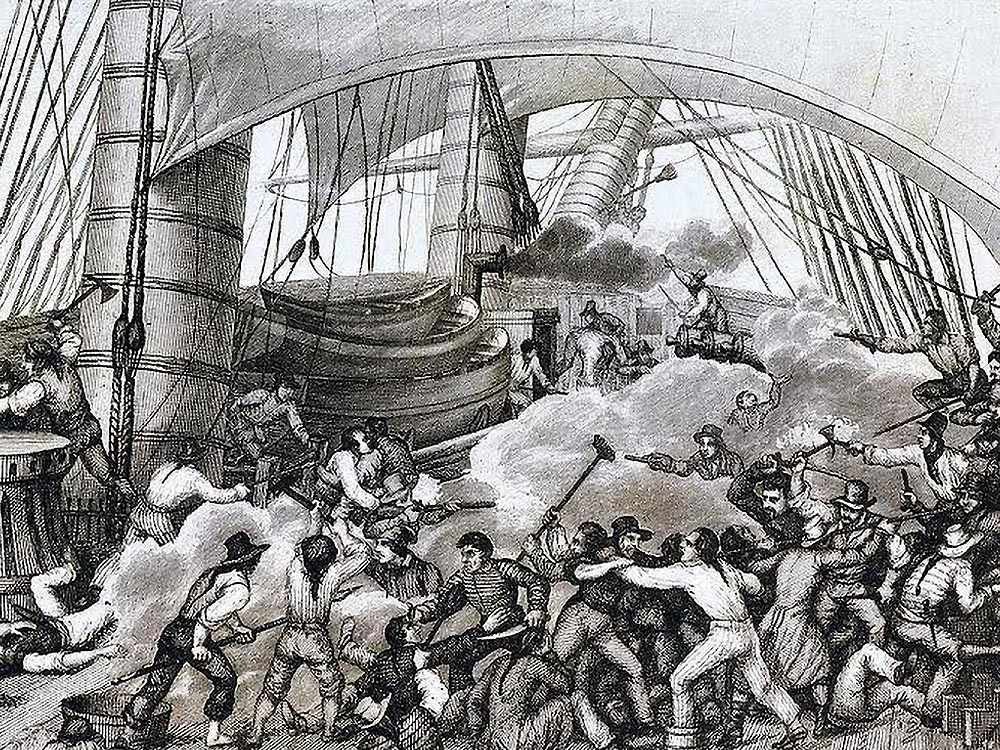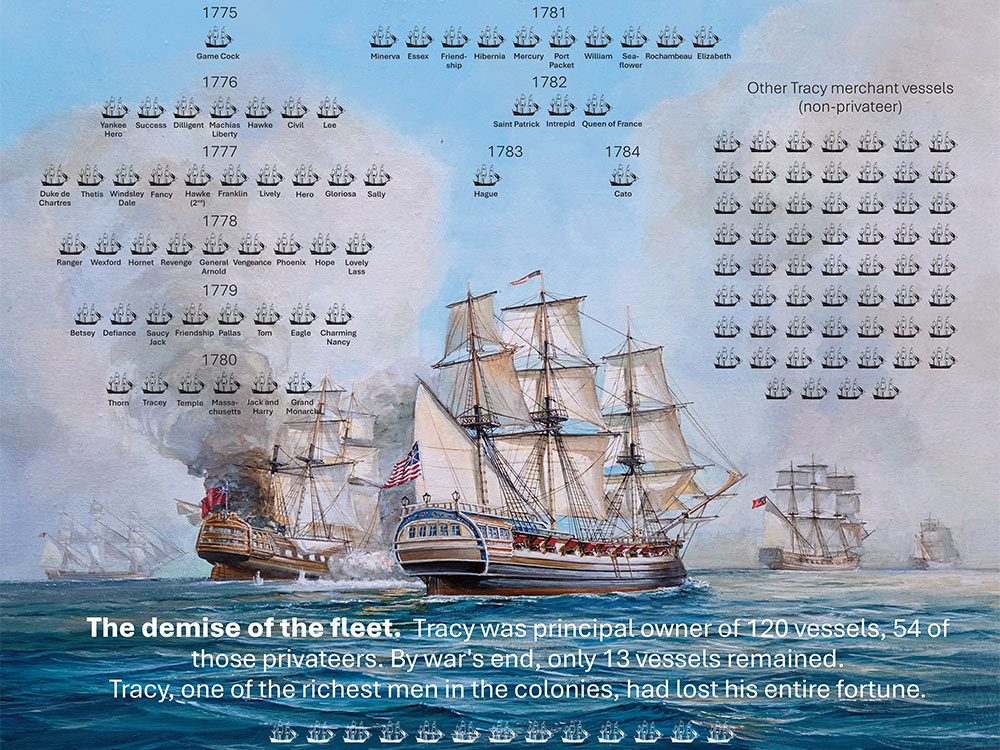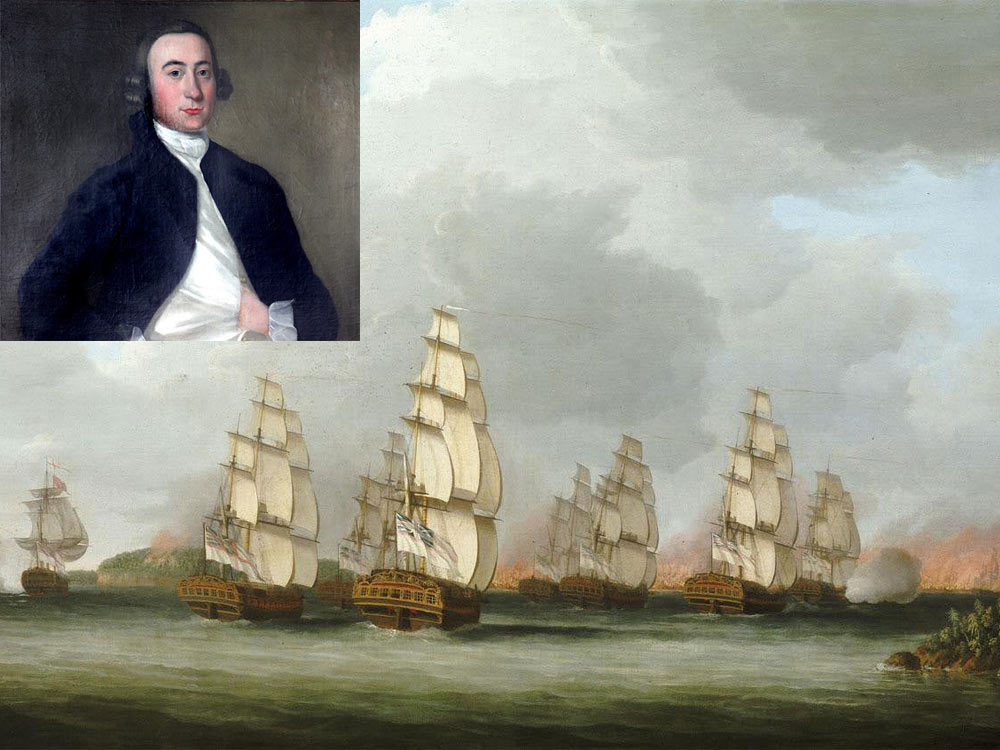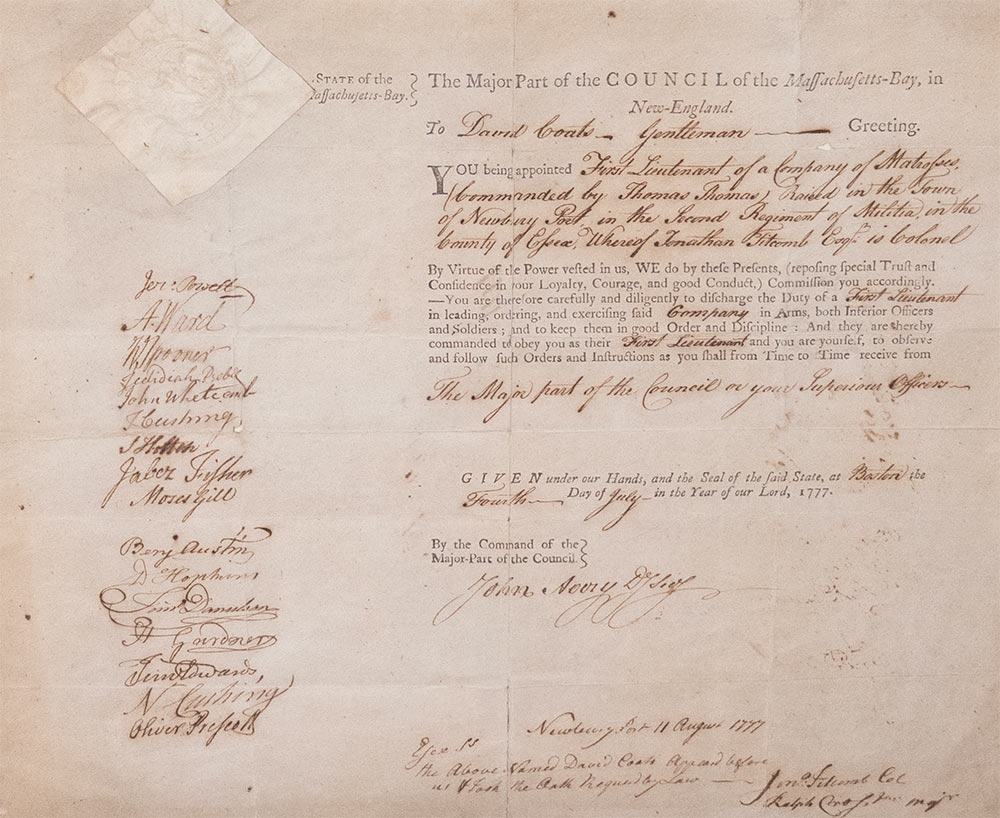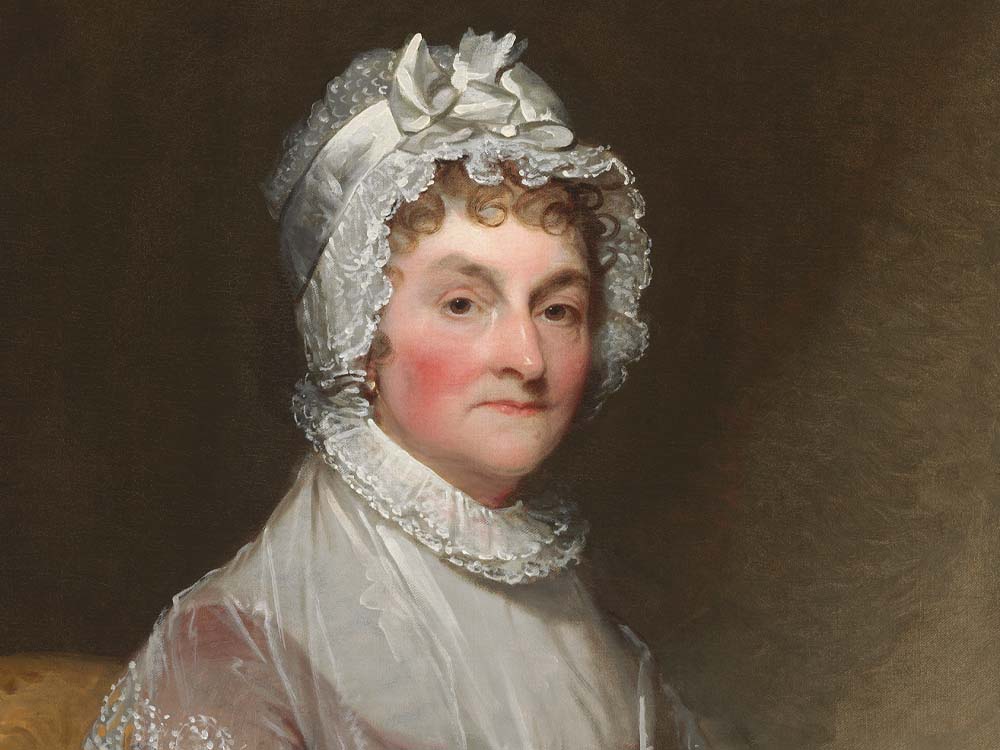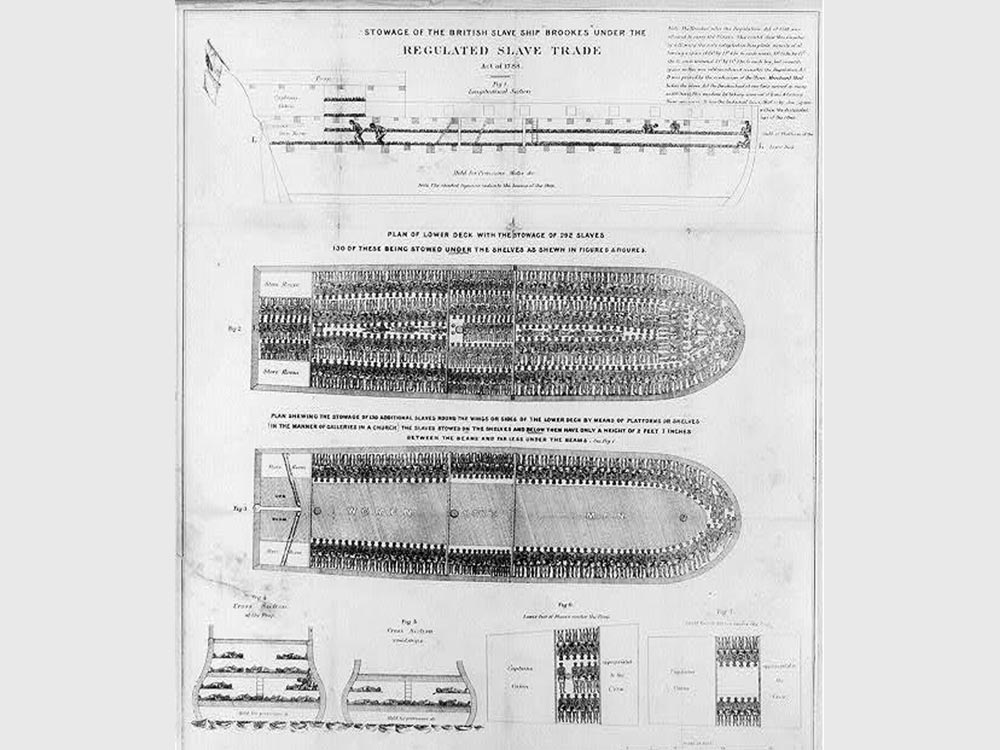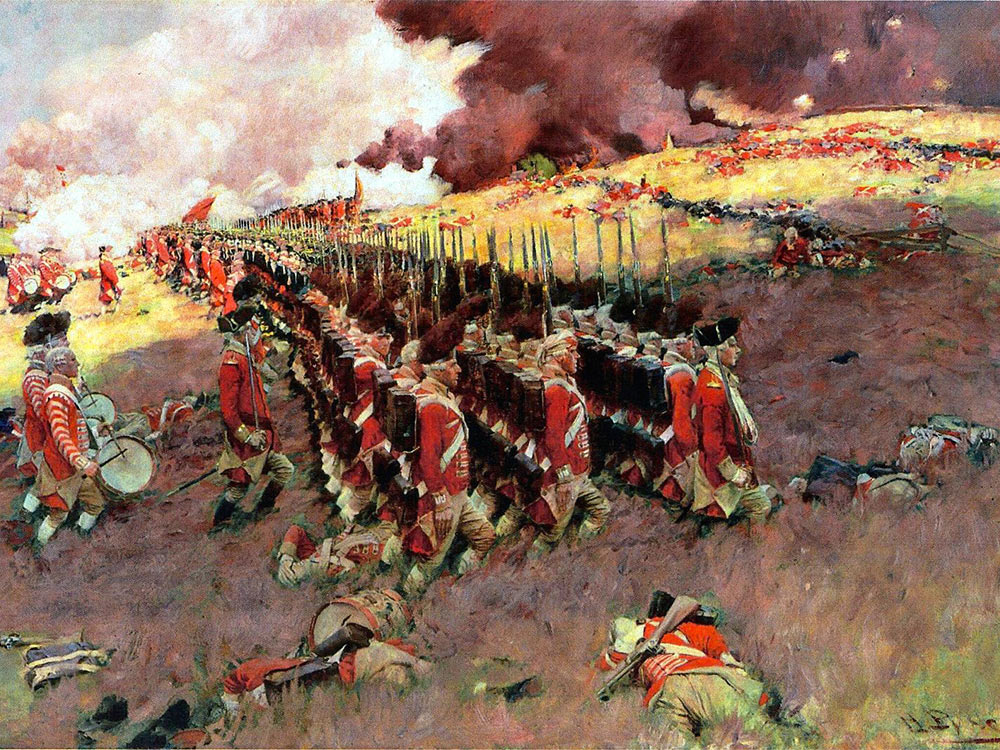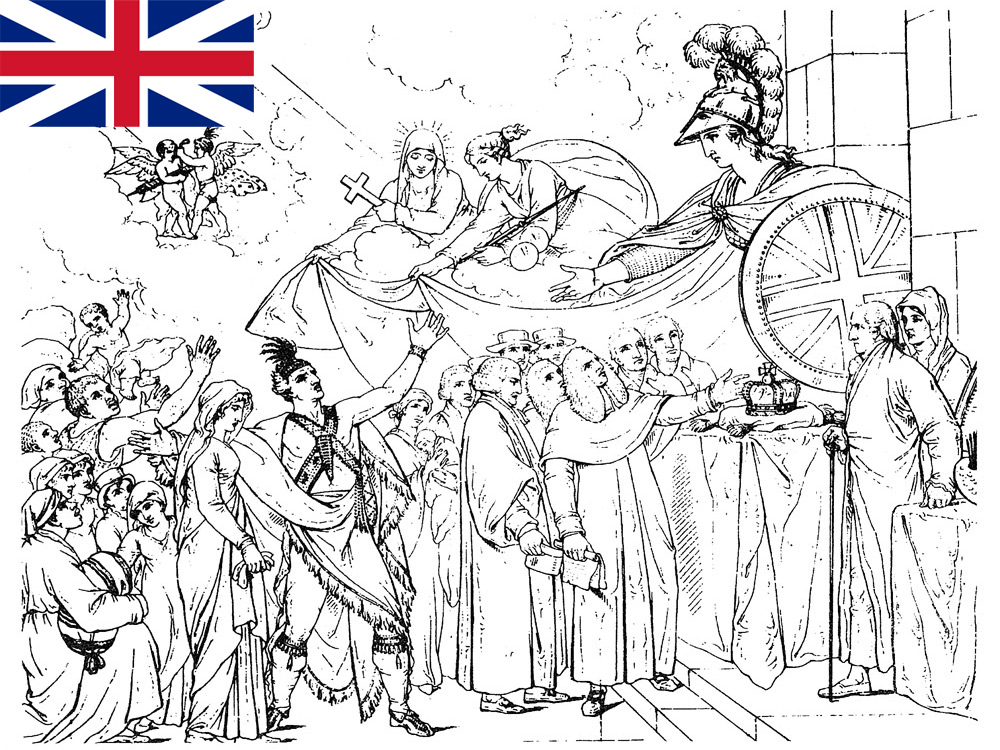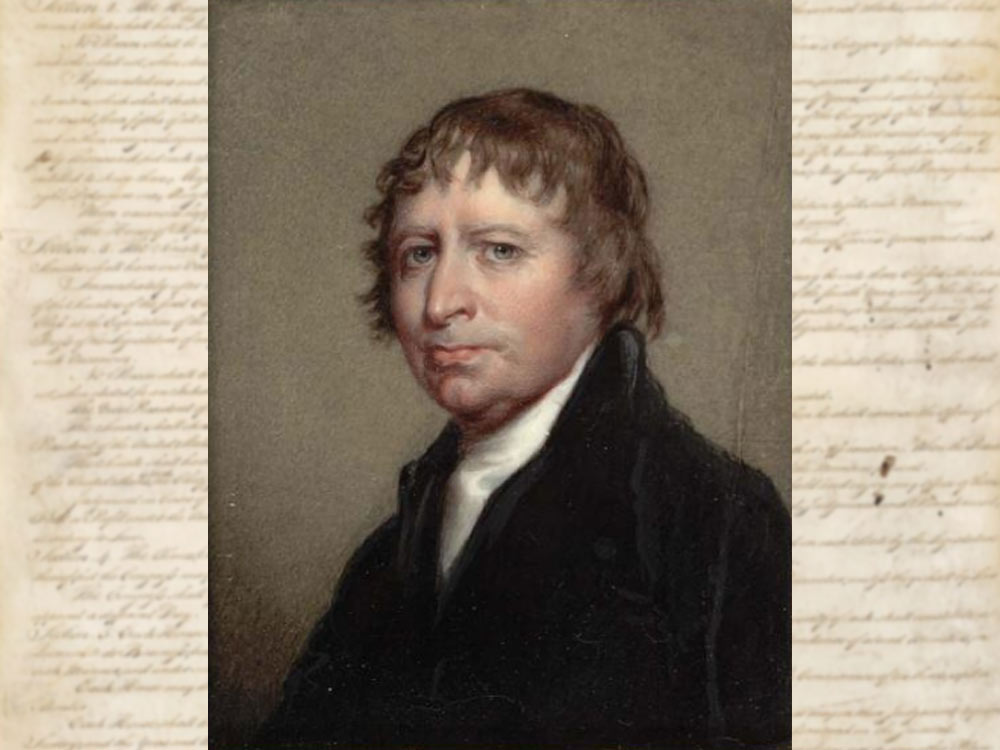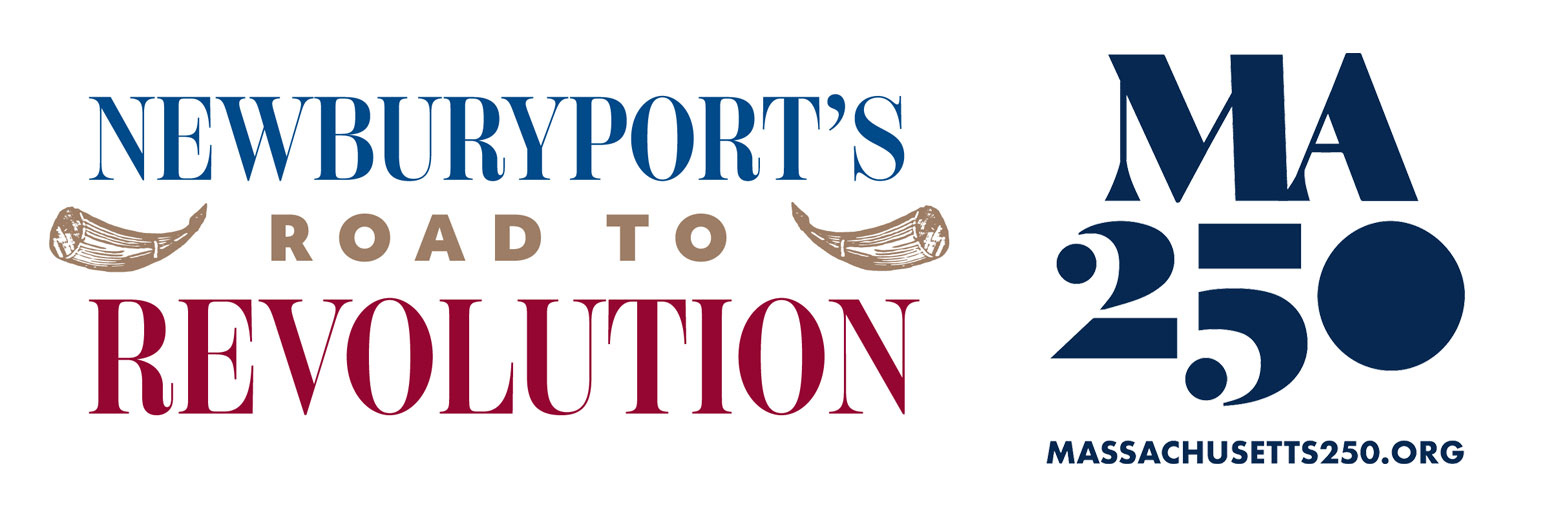
In the aftermath of the French and Indian War, Great Britain gained enormous territories from the French in North America. However, over the next 15 years, a shift from limited regulation to direct taxation to pay off war debt, disputes over frontier policy, plus a growing sense of self-identity and related desire for self-governance, led to increased colonial resentment, violence and ultimately to the American Revolution.
On the road to and during the Revolutionary War, Newburyport contributed greatly to the struggle for independence. The town contributed immediately to the war effort, sending men to Concord and Bunker Hill. It staged the ill-fated Quebec Expedition. An abundance of skilled shipwrights, seasoned sailors, savvy merchants, ardent spirit and protected harbor made Newburyport into a hub for privateers thus helping to disrupt enemy shipping and supply lines. It built one of the 1st thirteen frigates for the nascent Continental Navy. Many paid the supreme sacrifice and more were imprisoned.
President George Washington visited Newburyport in 1789. This visit underscored the role the town played in regulating maritime trade and collecting much needed revenue via the Custom House for the depleted Federal coffers.
Special Thanks to:


Newburyport Road to Revolution: A Timeline of Key Points
Newburyport’s Road to Revolution explores the events and decisions that led inexorably to Newburyport’s early and ardent support of the Revolutionary cause.
Road to Revolution: First Steps
Divided Loyalties: Newburyport and the American Revolution
No Taxation Without Representation
Britain’s Parliament passed a series of acts to tax the colonies between 1760 and 1775. The intent was to paying down war debt. The outcome was to ratcheted up tensions to a breaking point. With no vote in parliamentary elections, colonists had no voice. This led to the famous motto, “No taxation without representation”.
Boston Massacre
A 19th century depiction of the events of the Boston Massacre in 1770 emphasized the death of Crispus Attucks. By the 1850s, 80 years after the Boston Massacre, abolitionists resurrected Crispus Attucks as a powerful symbol of resistance and sacrifice. John H. Bufford’s print places Attucks at the center of the event as a heroic martyr as he was known to be a respected sailor.
Newburyport’s Role in the American Revolutionary War
During the American Revolutionary War, Newburyport, Massachusetts, emerged as a maritime and military hub for the Patriot cause. Its rise in strategic importance came largely as a result of British actions against neighboring cities like Boston and Portland, which forced a shift in maritime logistics and operations to safer harbors.
What If? The Quebec Expedition, 1775
As early as August 1775, Washington launched one of the most daring undertakings of the war. An expeditionary force, led by Colonel Benedict Arnold, would set out to capture Quebec City and thus, hopefully force Britain out of Canada.
Reverend Samuel Spring
Born in Uxbridge, Massachusetts, Samuel Spring became a force of moral and spiritual leadership during one of the most trying moments in American history. As a young clergyman, Spring was present at the Battle of Bunker Hill in June 1775. When General Benedict Arnold prepared for his march through the Maine wilderness in an attempt to seize Quebec, Reverend Spring volunteered to go, serving as both chaplain and medic.
Privateers vs the Royal Navy: David vs Goliath
The Royal Navy ruled the waves. At the start of hostilities, the 13 colonies had no navy of significance. However, Washington did have an ace up his sleeve. Experienced shipwrights and seasoned sailors were in abundance, plus with maritime trade massively compromised, merchants advocated for an age-old venture-privateering.
The Brig Dalton and a Revolutionary War Prisoner’s Chronicle
Birth of the Continental Navy and the Independent Marine Company
The Continental Navy, established by the Continental Congress on October 13, 1775, was an emergent force in America’s struggle for independence. Though modest in size compared to the formidable British Royal Navy, its creation marked a significant step in unifying the colonies under a national maritime force.
Newburyport Marine Society Members’ Contributions to the War
Capt. David Coats, Founding Member of the Newburyport Marine Society
During the war, Capt. Coats commanded one of four private vessels dispatched by Newburyport merchants to challenge British control in Penobscot Bay. He was captured in 1780 and later excused from Marine Society dues due to his imprisonment.
Women and War
With men drawn off to war, traditional roles blurred. Women manage businesses in addition to domestic responsibilities. They served as educators and cultural bearers, teaching reading and religion within the home, and formed the backbone of church and charitable organizations. This gave women a de facto role in political and economic decisions.
Tribal Nations and the Revolutionary War
When the War erupted in 1775, tribal nations throughout the Northeast were drawn into a struggle that would reshape their worlds. For most Native communities, the war was a fight for survival, sovereignty, and the future of their homelands. It also pitted nation against nation.
Enslaved People in Newburyport During the Revolutionary War
Displaced by Revolution: The Loyalist Experience in Massachusetts
The American Revolution is often told through the lens of those who fought for independence. Less well known are the stories of Loyalists—colonists who remained faithful to the British Crown. Branded as traitors by many of their neighbors, Loyalists faced intimidation, property seizure, exile, and, in many cases, permanent displacement.
The Essex Result
In Massachusetts, a collection of Essex County towns convened a county convention in 1778 to assess a state constitution. Newburyport lawyer Theophilus Parsons objected to the proposed constitution’s content, but also to the fact that it had been drafted by a sitting legislature, rather than by a special convention.
Debt from the Revolutionary War
Plan Your Visit
Plan Your Visit
- Museum Hours
Sunday: 12 pm - 5 pm
Closed Monday
- Tickets
Free for NBPT residents, kids under 12, and museum members
Cost of admission includes access to the Discovery Center.
- Parking
City parking is available adjacent to the museum. View parking lot directions.

